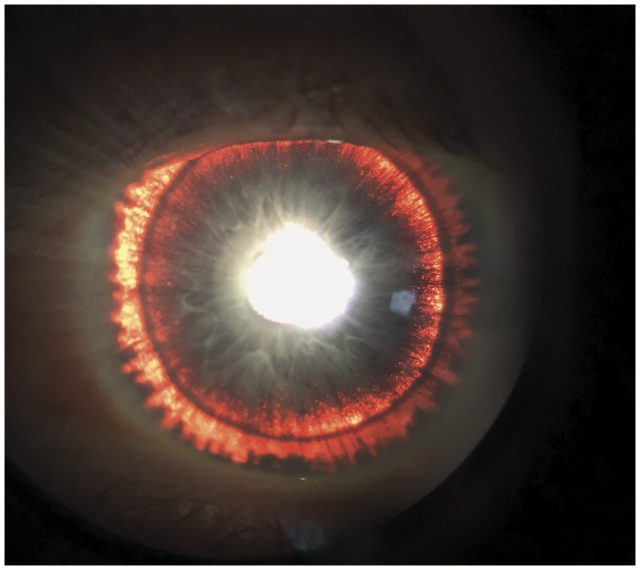
Move over, Dark Lord of Mordor. There’s a new blazing peeper in town.
Doctors in Texas came face to face with a dark, spine-tingling eye that looked rimmed by flames—or, as they calmly described it in a recent report in the New England Journal of Medicine: an eye with “circumferential spoke-like iris transillumination defects.”
They met this penetrating gaze during the routine eye exam of a 44-year-old man. The man had come into their Texas ophthalmology clinic simply to establish care as a new patient. He had recently moved into the area.
He didn’t have any specific complaints, according to the doctors. He reported a family history of glaucoma, which is a group of vision-jeopardizing conditions that lead to damage to the nerve that transmits light signals to the brain (the optic nerve).
A previous doctor had determined that the man had elevated pressure in his eyes, which is a leading culprit of glaucoma. The man had several prescribed medications to try to lower his intraocular pressure, which he was taking. When the Texas doctors checked his eye pressure, it was only slightly above the normal range.

At this point, the doctors diagnosed him with a rare genetic condition called pigment dispersion syndrome. According to the National Institutes of Health, the syndrome occurs when pigment granules that usually stick to the backside of the iris flake off into the clear, watery fluid that bathes the front of the eye. Let loose, the pigments can go on to clog up the eye’s drainage system, which then leads to increased pressure in the eye—as the man was experiencing. And that increased pressure can, in turn, damage the optic nerve.
Pigment dispersion syndrome is thought to be relatively uncommon, but when it does occur it usually shows up between people’s 20s and 40s. It affects men and women equally, most often in people with near-sightedness.
In the man’s case, doctors performed a laser procedure to ease his eyes’ drainage and pressure. He continued on with his pressure-lowering eye drops to keep on top of the condition.
NEJM, 2019. DOI: 10.1056/NEJMicm1903842 (About DOIs).
reader comments
90